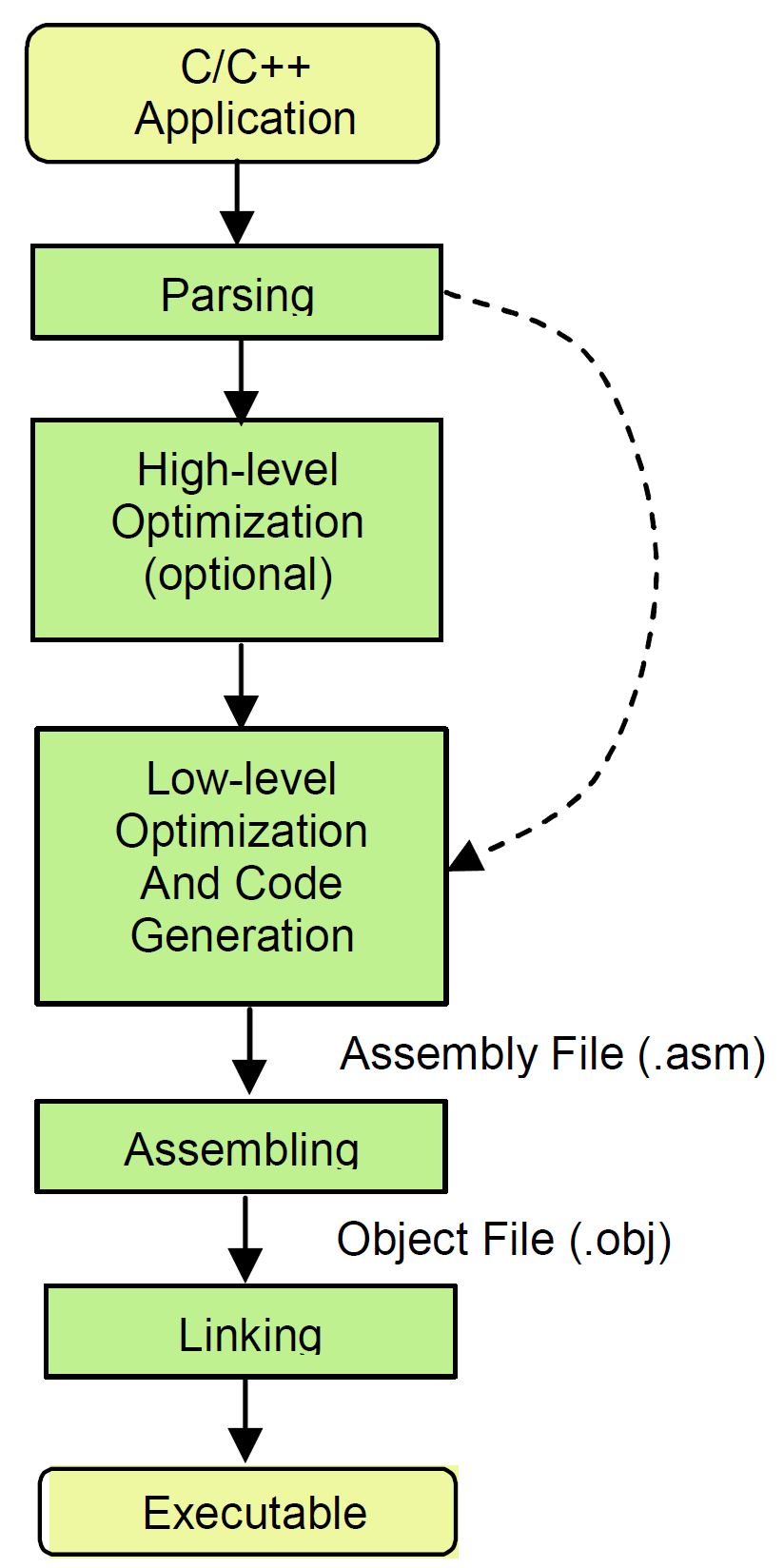4.1. Overview of the Compilation Process¶
The Texas Instruments C7000 compiler accepts C or C++ source input. When compiling, the compiler proceeds through several stages, as shown in Figure 4.1.

Figure 4.1 C7000 Compiler Processing Stages¶
First, the source file is parsed to create a high-level intermediate representation that closely resembles the source language, but is more tailored for optimization transformations.
Files and functions (optionally) compiled with some level of optimization pass through the high-level optimizer, which performs function inlining, loop transformations, and other code optimizations.
Next, the high-level intermediate language is translated into a low-level intermediate language, which closely resembles assembly. The low-level optimizer and code generation pass performs partitioning, register allocation, software pipelining, instruction scheduling, and other optimizations.
The output of the code generation pass is the assembly file, which is assembled into an object file by the assembler and then linked into a library or executable by the linker.
